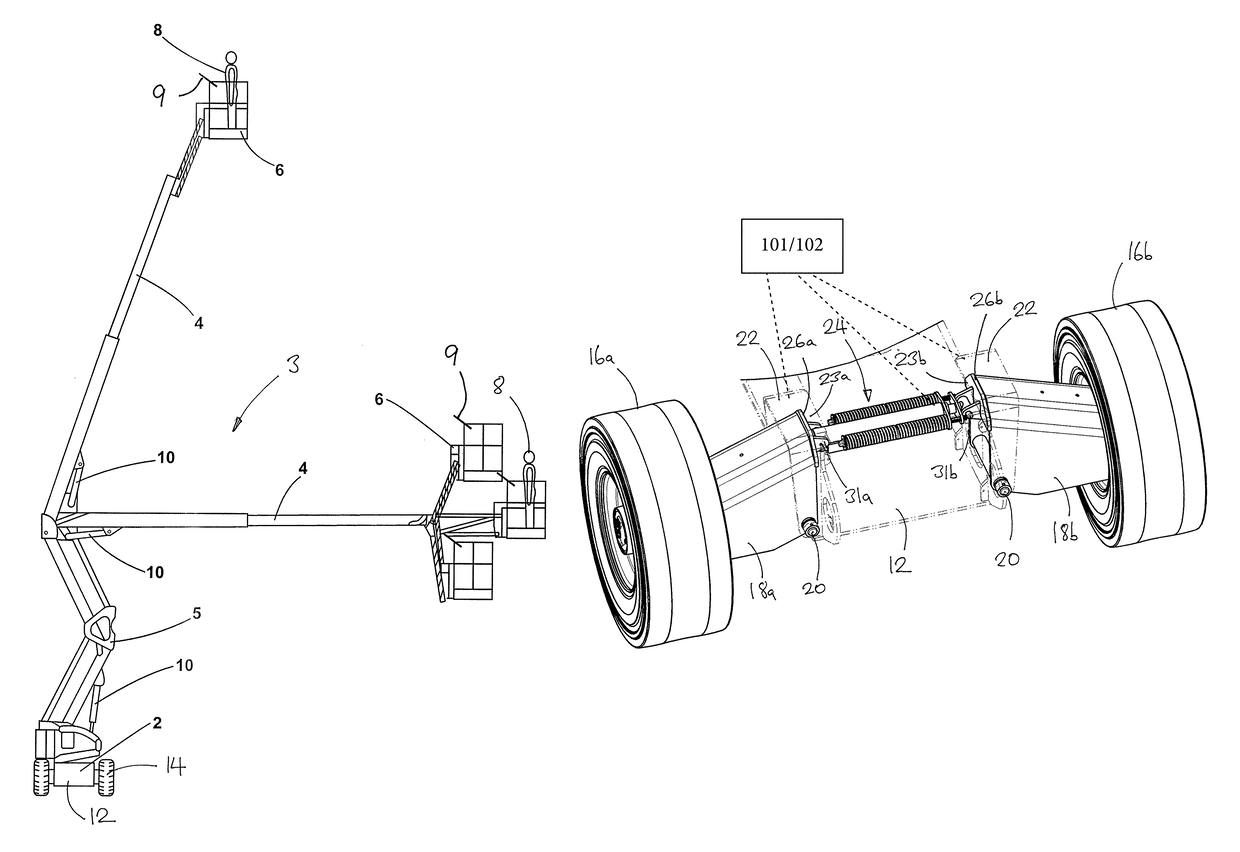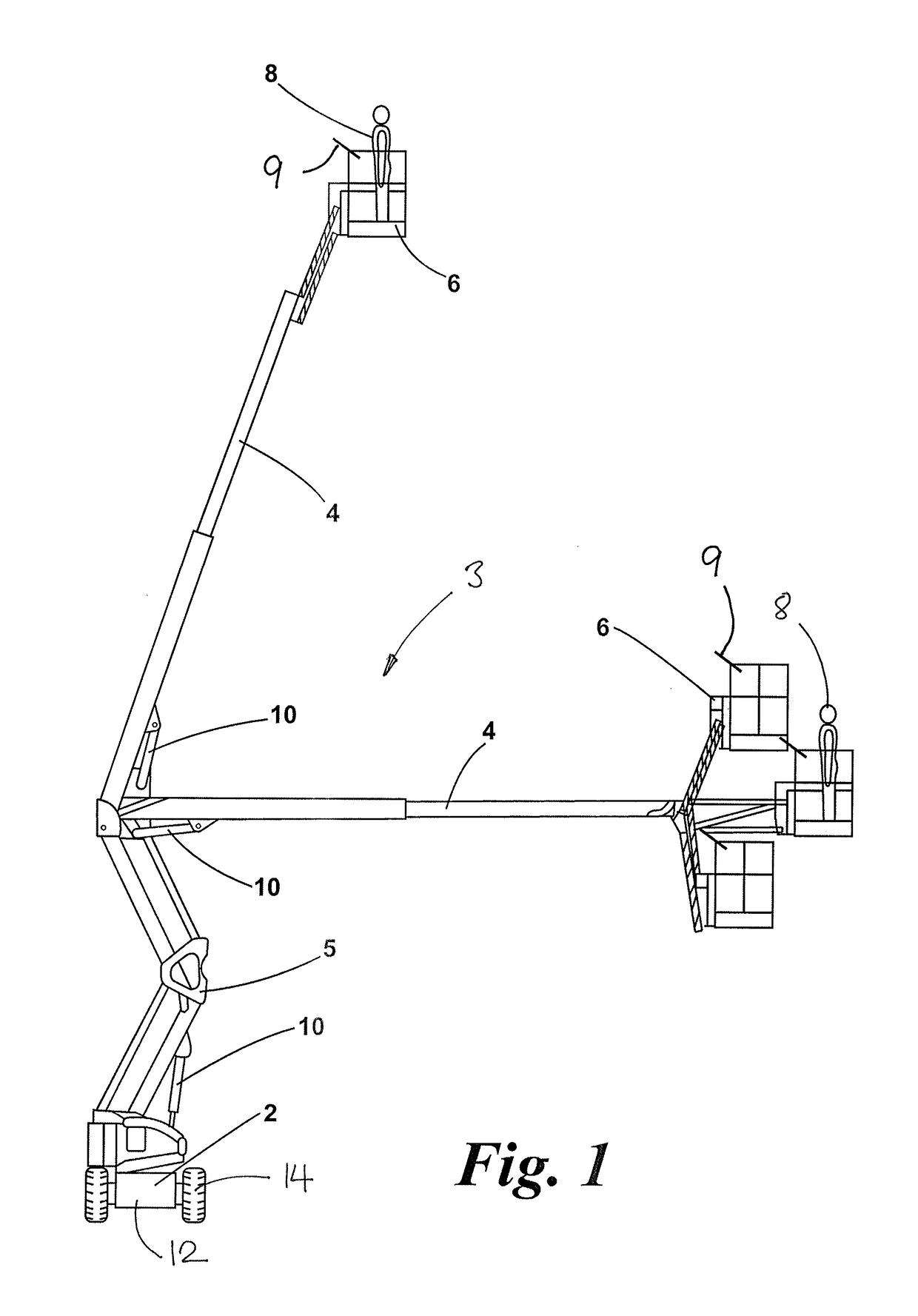Base unit for a vehicle
a technology for vehicles and base units, applied in the direction of resilient suspensions, transportation and packaging, lifting devices, etc., to achieve the effect of ensuring the stability of the platform
- Summary
- Abstract
- Description
- Claims
- Application Information
AI Technical Summary
Benefits of technology
Problems solved by technology
Method used
Image
Examples
Embodiment Construction
[0035]FIG. 1 shows a typical mobile elevating work platform, which includes a wheeled base 2, a hydraulically operated lifting mechanism 3 comprising an extending boom 4 and a rising structure 5, and a cage 6 for a human operator 8, including a control console 9 for controlling operation of the MEWP. The boom 4, which is shown here in two different operating positions, may be retracted and folded onto the wheeled base 2 for transportation or storage. Movement of the boom is controlled by various hydraulic cylinders 10, which are connected to a hydraulic drive system (not shown) that is controlled via the control console 9.
[0036]The components of the MEWP as described above are all conventional and will not therefore be described in further detail. It should be understood that the mobile elevating work platform may take various alternative forms.
[0037]In this example the base unit 2 includes a chassis 12, a pair of steerable wheels 14 that are mounted in conventional manner on a fixe...
PUM
 Login to View More
Login to View More Abstract
Description
Claims
Application Information
 Login to View More
Login to View More - R&D
- Intellectual Property
- Life Sciences
- Materials
- Tech Scout
- Unparalleled Data Quality
- Higher Quality Content
- 60% Fewer Hallucinations
Browse by: Latest US Patents, China's latest patents, Technical Efficacy Thesaurus, Application Domain, Technology Topic, Popular Technical Reports.
© 2025 PatSnap. All rights reserved.Legal|Privacy policy|Modern Slavery Act Transparency Statement|Sitemap|About US| Contact US: help@patsnap.com



